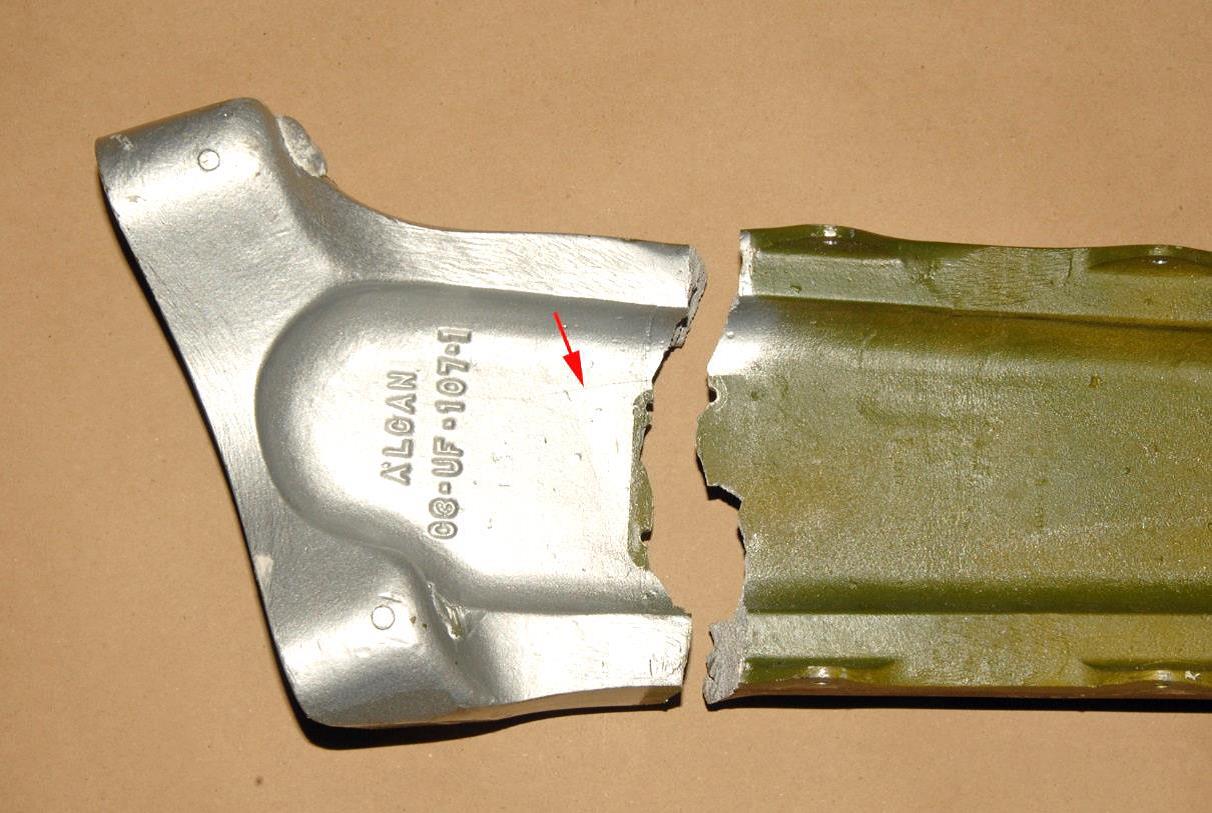Attention:
Owners, Operators And Maintainers Of Dhc-3 Aeroplanes
| File Classification No. : | Z 5000-35 |
|---|---|
| RDIMS No. : | 14224754 |
| Document No. : | CASA 2019-01 |
| Issue No. : | 01 |
| Effective Date: | 2019-01-11 |
Purpose:
The purpose of this Civil Aviation Safety Alert (CASA) is to raise awareness of a recent failure from stress corrosion cracking on a DHC-3 float landing gear and recommend actions to prevent further failures.
Background:
A DHC-3 operator recently found a front float strut with part number (P/N) C3UF108-6 to be fractured. The failure was discovered after completion of a flight. There were no injuries to crew or passengers and there was no other damage to the aeroplane. The failed part is depicted in Figure 1.
Figure 1.
The front strut is a primary component of a float landing gear. Fracture of the part has the potential to cause a catastrophic accident.
At the time of the failure, the part had been installed for approximately two weeks and had accumulated 12 hours air time with 28 landings. The part had been purchased approximately 10 years prior to the occurrence. Records indicated that it had previously been installed on another aeroplane but neither the total hours air time nor flight cycles could be determined.
A failure analysis was performed on the fractured part. That analysis found that the fracture was caused by stress corrosion cracking. Stress corrosion cracking of aluminum alloys requires three conditions to exist before it can occur:
- A material of susceptible composition and grain structure;
- A corrosive environment; and
- A sustained tensile stress.
Some of the front struts used on DHC-3 float landing gear, including the failed part, are manufactured from an aluminum alloy casting that is known to have low resistance to stress corrosion cracking. Aircraft operation on floats will repeatedly expose the strut to water. For salt water operations the strut is especially exposed to an environment that is suitable for the development of stress corrosion cracking. It is apparent that for struts in this environment, two of the three conditions for stress corrosion cracking will exist at all times.
Affected part numbers (P/Ns) include the following:
C3UF8 and C3UF149 Fairing and Strut Assembly
C3UF108 and C3UF148 Strut Assembly
C3UF107 and C3UF147 casting
Service history of the affected parts indicates that failure is unlikely to occur if sustained tensile stresses are avoided. This is the only known failure of this part family from stress corrosion cracking.
During the investigation of the failure, it was noted that the failed part was bent and twisted. This was apparent because at least two features of the part were found to be significantly outside of the allowable dimensional tolerances. It was also reported that some difficulty was encountered during the installation of the strut, two weeks before the accident. After the failure occurred, other right hand struts were fitted to the aircraft with no difficulty. This suggests that excessive fit-up forces were likely required to install the failed part. These excessive forces would produce sustained tensile stresses on the part, fulfilling the third condition required for stress corrosion cracking to occur, leading to the failure of the part.
There are alternatives to the front float strut P/Ns that are discussed above. These alternatives are manufactured from aluminum alloy plate material that is much less vulnerable to stress corrosion cracking than the cast aluminum material of the original parts. In addition, the alternative parts have protective finishes that are generally more effective at protecting the part from the environment than the finishes used on the failed part.
Transport Canada has issued Airworthiness Directive (AD) CF-2018-04 applicable to all DHC-3 aeroplanes. This AD requires recurring inspection of components that are likely to be adversely affected by corrosion, wear and fatigue cracking. The front float strut is one of the components that is required to be inspected by AD CF-2018-04.
Recommended action:
Owners, operators and maintainers of DHC-3 aeroplanes operating on floats, are cautioned not to use excessive fit-up forces when installing front struts. If the part will not install easily it should be inspected for conformity to dimensional tolerances. If the part conforms, troubleshooting of the float installation should be performed to determine the root cause of the installation difficulties.
When purchasing new struts, consider the parts with Supplemental Type Certificate (STC), Parts Manufacturing Approval (PMA) or Part Design Approval (PDA) that are made from materials that are less vulnerable to stress corrosion cracking and that feature robust protective finishes as alternatives to the part numbers discussed previously in this document.
Contact office:
For more information concerning this issue, contact a Transport Canada Centre; or contact Ross McGowan, Continuing Airworthiness in Ottawa, by telephone at 1-888-663-3639, facsimile 613-996-9178 or e-mail cawwebfeedback@tc.gc.ca.
Original signed by
Rémy Knoerr
Chief, Continuing Airworthiness
National aircraft certification
The Transport Canada Civil Aviation Safety Alert ( CASA ) is used to convey important safety information and contains recommended action items. The CASA strives to assist the aviation industry's efforts to provide a service with the highest possible degree of safety. The information contained herein is often critical and must be conveyed to the appropriate office in a timely manner. The CASA may be changed or amended should new information become available.
